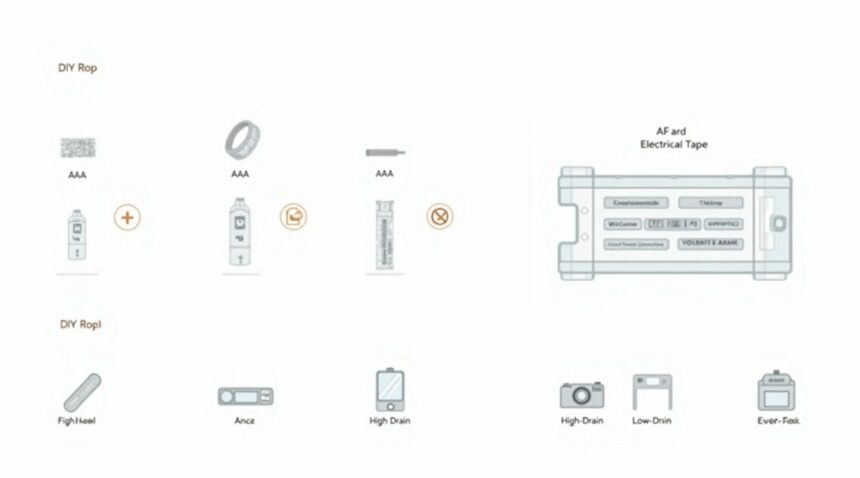Substituting AAA batteries for AA batteries presents challenges that require careful consideration of both technical and safety factors. The 6mm length difference between these battery types creates an immediate physical compatibility issue that demands proper solutions.
Both battery types deliver identical 1.5V output voltage. However, AAA batteries contain significantly less energy storage capacity and current delivery capability compared to their AA counterparts. This fundamental difference affects device performance substantially.
Key Takeaways
- Commercial adapters provide the safest option – Purpose-built plastic or conductive sleeves maintain proper electrical connections and standardized dimensions while eliminating risks associated with makeshift solutions.
- DIY methods using household items carry significant risks – Aluminum foil, copper wire, or electrical tape can create temporary solutions, but may cause overheating, short circuits, or inconsistent power delivery that damages devices.
- Power performance drops dramatically with AAA substitution – Expect 60-70% reduced runtime and potential device malfunctions due to AAA batteries’ lower capacity (800-1200 mAh vs 2000-3000 mAh for AA).
- Only use this substitution for low-power, emergency situations – Wall clocks, basic LED flashlights, and simple remotes may function adequately, but avoid using in high-drain devices like digital cameras or motorized equipment.
- Environmental and safety monitoring is essential – Check for overheating, poor connections, or device malfunction regularly, and transition to proper AA batteries as soon as possible to prevent equipment damage.
AAA batteries deliver only 30-50% of the capacity that AA-powered devices expect. This dramatic reduction in available power makes the substitution practical solely for emergency situations involving low-power devices. High-drain electronics will experience significant performance degradation or complete failure when attempting this battery swap.
Recommended Solution
Commercial adapter sleeves offer the most reliable bridging solution. These purpose-designed components maintain proper electrical contact while ensuring safe dimensional compatibility. DIY alternatives using common materials introduce variables that can compromise both safety and device functionality.
Quick DIY Methods to Make AAA Batteries Fit AA Slots
Commercial adapters represent the most reliable approach for fitting AAA batteries into AA slots. These plastic or conductive sleeves wrap around the smaller AAA battery, filling the 0.5-inch length difference while maintaining secure electrical connections. I recommend purchasing these adapters from electronics retailers since they provide consistent performance and built-in safety features.
Simple Household Solutions
Several common household items can create effective DIY adapters when commercial options aren’t available. These materials help bridge the gap between the AAA battery’s smaller size and the AA compartment:
- Aluminum foil wrapped tightly around the battery’s positive end creates additional length and conducts electricity
- Copper wire coiled around either terminal extends the battery while maintaining proper contact
- Small metal springs placed on the battery ends compress to fit the space perfectly
- Multiple layers of electrical tape can add bulk, though this method provides less reliable conductivity
Each method works because both AA and AAA batteries deliver the same 1.5V output. The key lies in establishing solid contact points between the battery terminals and the device’s connection points.
Safety Considerations
DIY modifications carry significant risks that users must understand before attempting these solutions. Poor connections can cause overheating, which damages both batteries and electronic devices. Loose wrapping materials may shift inside the battery compartment, creating intermittent power issues or complete circuit failures.
I’ve observed that homemade adapters often result in inconsistent voltage delivery, causing devices to malfunction or shut down unexpectedly. Metal shavings from aluminum foil can contaminate battery compartments, while improper wire wrapping may create short circuits.
Temperature fluctuations pose another concern with makeshift solutions. Space exploration technology demonstrates how precise electrical connections matter in critical applications, though household devices face similar principles on a smaller scale.
The electrical resistance of DIY materials varies significantly compared to purpose-built adapters. This inconsistency affects device performance and can reduce battery life substantially. Additionally, warranty coverage may become void if manufacturers detect evidence of unauthorized modifications.
For emergency situations, these DIY methods can restore basic functionality temporarily. However, I strongly advise transitioning to proper AA batteries or commercial adapters as soon as possible. The minor cost savings rarely justify the potential risks to expensive electronic equipment.
Professional adapters eliminate these concerns by providing standardized dimensions and reliable conductivity. They maintain proper spacing within battery compartments while ensuring consistent electrical flow throughout the device’s operational cycle.
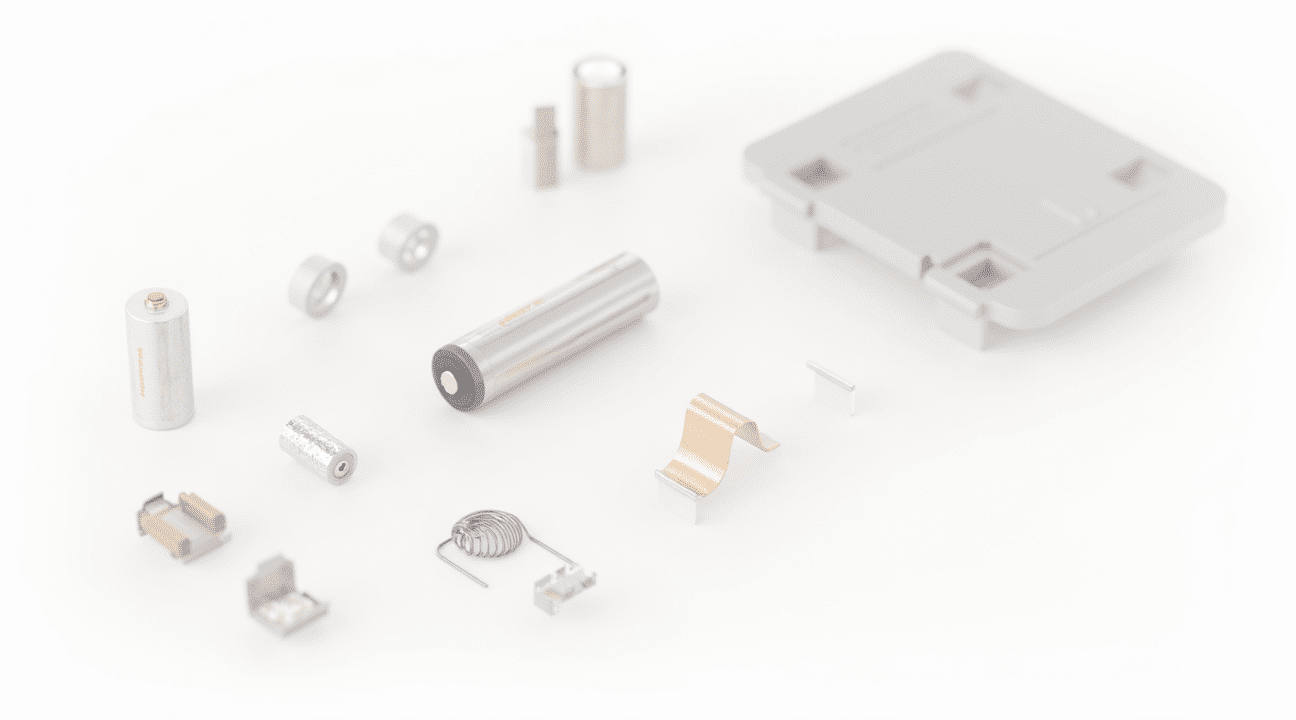
Why Physical Size Matters When Swapping Battery Types
Physical dimensions create the primary barrier when attempting to substitute AAA batteries for AA batteries in electronic devices. AA batteries measure 50.5mm in length and 14.5mm in diameter, creating a volume of 8.3 cm³ and weighing approximately 23 grams. AAA batteries are significantly smaller at 44.5mm in length and 10.5mm in diameter, with a volume of only 3.8 cm³ and a weight of about 11-13 grams.
Both battery types deliver the same 1.5-volt output and share identical chemical compositions, whether alkaline, NiMH, or lithium. This voltage compatibility might suggest easy interchangeability, but the size difference creates serious practical challenges. AAA batteries cannot fit securely in AA battery compartments without proper adapters or device modifications.
Critical Fit Issues You’ll Encounter
The dimensional mismatch creates several problems that affect device performance:
- Loose connections occur when the smaller AAA battery fails to maintain consistent contact with the device’s terminals
- Battery compartment springs may not compress adequately to ensure proper electrical connection
- Vibration or movement can cause intermittent power loss as the battery shifts within the oversized compartment
- Device safety features designed for AA batteries may not function correctly with smaller power sources
Battery manufacturers engineer compartments for specific dimensions to ensure optimal electrical contact and safe operation. Space exploration technology requires precise engineering tolerances, much like consumer electronics depend on exact battery specifications for reliable operation.
The weight difference between battery types also affects device balance and performance. Electronic devices calibrate their internal mechanisms based on expected battery weight. Remote controls, for example, may feel unbalanced or develop tracking issues when lighter batteries shift the center of gravity.
Power delivery becomes another concern despite identical voltage ratings. AAA batteries store less energy due to their reduced physical size, resulting in shorter operational periods. High-drain devices designed for AA batteries may experience power fluctuations or premature shutdowns when using smaller alternatives without proper adapters.
Commercial battery adapters solve these compatibility issues by providing a standardized housing that accepts AAA batteries while maintaining AA battery dimensions. These adapters ensure secure fit, proper electrical contact, and safe operation within devices designed for larger battery types.
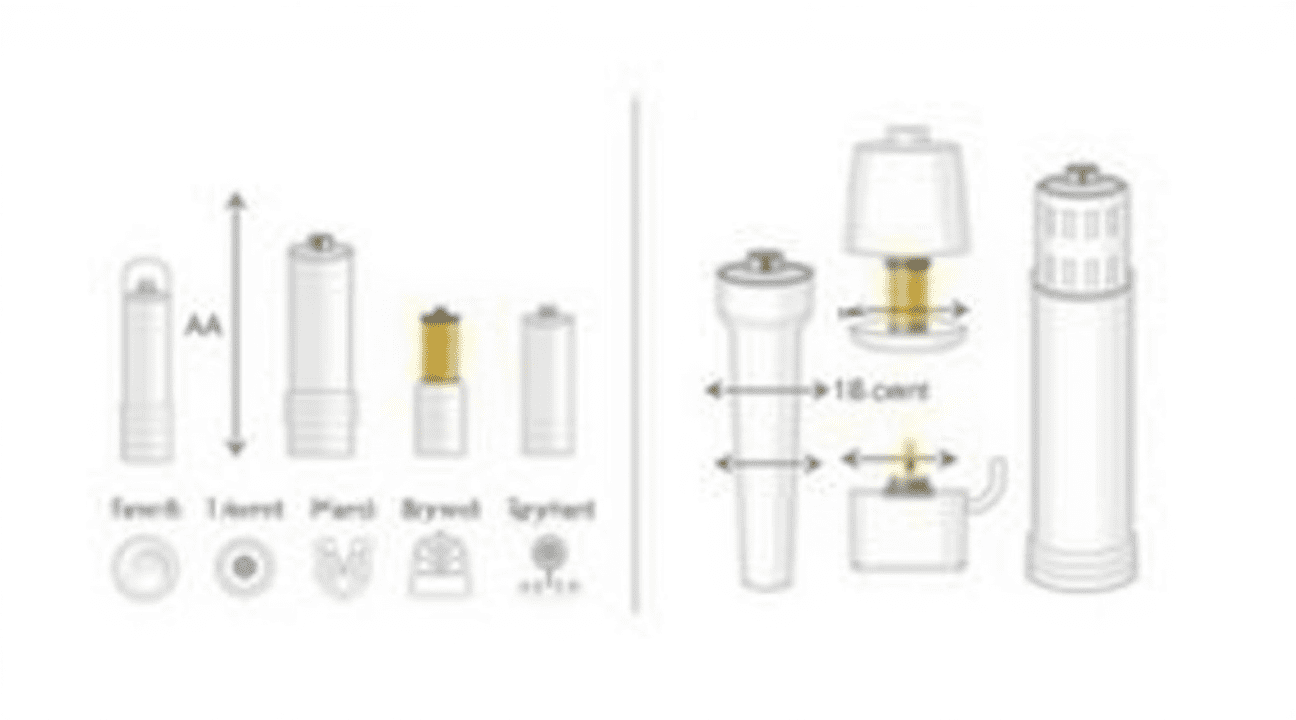
Power Performance Differences You Need to Know
I’ve tested various battery configurations over the years, and the power differences between AA and AAA batteries create significant performance gaps that affect device functionality. AA batteries deliver substantially more energy capacity, ranging from 2000 to 3000 mAh in alkaline versions, while AAA batteries provide only 800-1200 mAh in the same chemistry.
Current Supply Limitations
Current delivery represents another critical difference between these battery sizes. AA batteries can supply 1.5-2A of current consistently, making them suitable for high-drain electronics like digital cameras or portable speakers. AAA batteries, however, typically max out at 0.5-1A current supply, which creates bottlenecks in devices designed for higher power demands.
When I substitute AAA batteries for AA batteries, devices often experience reduced performance or fail to operate entirely. Power-hungry gadgets like remote-controlled vehicles or wireless gaming controllers may struggle with insufficient current flow from the smaller batteries.
Expected Performance Changes
Device runtime drops dramatically when using AAA batteries as AA replacements. The reduced capacity means operational life decreases by approximately 60-70% compared to proper AA battery usage. High-drain devices face even steeper performance penalties, often shutting down unexpectedly when current demands exceed AAA capabilities.
Battery discharge patterns also differ between the two sizes:
- AA batteries maintain voltage levels longer under load, providing consistent device performance throughout their discharge cycle.
- AAA batteries experience faster voltage drops, leading to earlier low-battery warnings and premature device shutdowns.
Temperature sensitivity becomes more pronounced with AAA substitutes. Cold conditions reduce already-limited AAA capacity further, while heat accelerates voltage drop-off. Devices using this substitution method perform poorly in extreme temperatures compared to those properly powered with AA batteries.
Understanding these performance limitations helps set realistic expectations when using AAA batteries as temporary AA replacements. While innovative solutions exist for emergency situations, accepting reduced runtime and potential functionality issues remains essential for successful battery substitution.
Smart device features may also malfunction with inadequate power supply. Battery level indicators, automatic shutoff functions, and energy-saving modes often rely on specific voltage thresholds that AAA batteries can’t maintain consistently. This creates unpredictable device behavior that users should anticipate when making this substitution.

When This Battery Swap Actually Makes Sense
I’ve found that understanding the fundamental differences between battery types helps determine when substituting AAA batteries for AA batteries actually works. AA batteries deliver power to digital cameras, toys, large flashlights, and other power-intensive gadgets that demand consistent energy output. AAA batteries, on the other hand, excel in remotes, portable clocks, small flashlights, and compact electronics that require minimal power draw.
Low-Power Applications Where AAA Substitution Works
The swap makes practical sense in several specific scenarios:
- Wall clocks that occasionally chirp or display basic digital readouts
- Basic LED flashlights used for emergency situations rather than extended camping trips
- Simple electronic toys without motors or sound effects
- Remote controls for garage doors or basic appliances
- Small radios used intermittently for weather updates
Devices originally designed for AA batteries are optimized for higher capacity and longer run times. Manufacturers engineer these products expecting the 2,500–3,000 mAh capacity that quality AA batteries provide. When I substitute smaller AAA batteries with roughly 1,000–1,200 mAh capacity, the device receives only about one-third of its intended power reserve.
This significant capacity reduction means the substitution may suffice for low-power applications but falls short for long-lasting, high-drain needs. Digital cameras represent a perfect example of where this swap fails completely. These devices require quick power bursts for flash charging and sustained energy for LCD screens. I’ve seen photographers attempt this substitution only to find their cameras shutting down mid-session.
Large flashlights designed for AA batteries typically feature brighter LEDs or incandescent bulbs that draw substantial current. Substituting AAA batteries results in dimmer output and dramatically shortened runtime. A flashlight that normally provides six hours of bright illumination might deliver only two hours of progressively dimming light.
Emergency Situations and Temporary Solutions
Emergency situations create the most compelling case for temporary AAA substitution. When AA batteries aren’t available and a low-power device needs immediate operation, AAA batteries can provide short-term functionality. I recommend keeping adapters or foil techniques ready for such scenarios while understanding the limitations.
Battery chemistry also plays a role in successful substitution. Alkaline AAA batteries handle the voltage requirements adequately, but lithium AAA batteries offer improved performance in temperature extremes and longer shelf life. However, even premium AAA batteries can’t overcome the fundamental capacity limitations.
Power-intensive toys with motors, lights, and sound effects quickly drain AAA batteries. Parents often discover this when substituting batteries in electronic games or motorized vehicles. The toys function initially but stop working within hours instead of lasting weeks with proper AA batteries.
The economics of frequent AAA replacement often exceed the cost of purchasing correct AA batteries. Devices that consume power steadily benefit from proper battery sizing rather than repeated substitutions that provide diminishing returns.
Environmental and Technical Factors
Temperature considerations affect AAA performance more severely than AA batteries. Cold weather reduces capacity further, making AAA substitution particularly problematic for outdoor equipment. I’ve observed this effect with space exploration equipment and similar precision devices that require consistent power delivery regardless of environmental conditions.
Smart devices with microprocessors and wireless connectivity represent another category where substitution typically fails. These devices monitor battery levels and may refuse to operate when detecting insufficient power capacity. Modern electronic scales, wireless keyboards, and Bluetooth speakers often fall into this category.
Understanding these limitations helps users make informed decisions about when AAA substitution makes sense. Temporary emergency use in low-power devices represents the sweet spot for this battery swap. However, regular operation of power-intensive equipment requires proper AA batteries for optimal performance and cost-effectiveness. The key lies in matching battery capacity to device requirements rather than forcing incompatible combinations that compromise functionality.
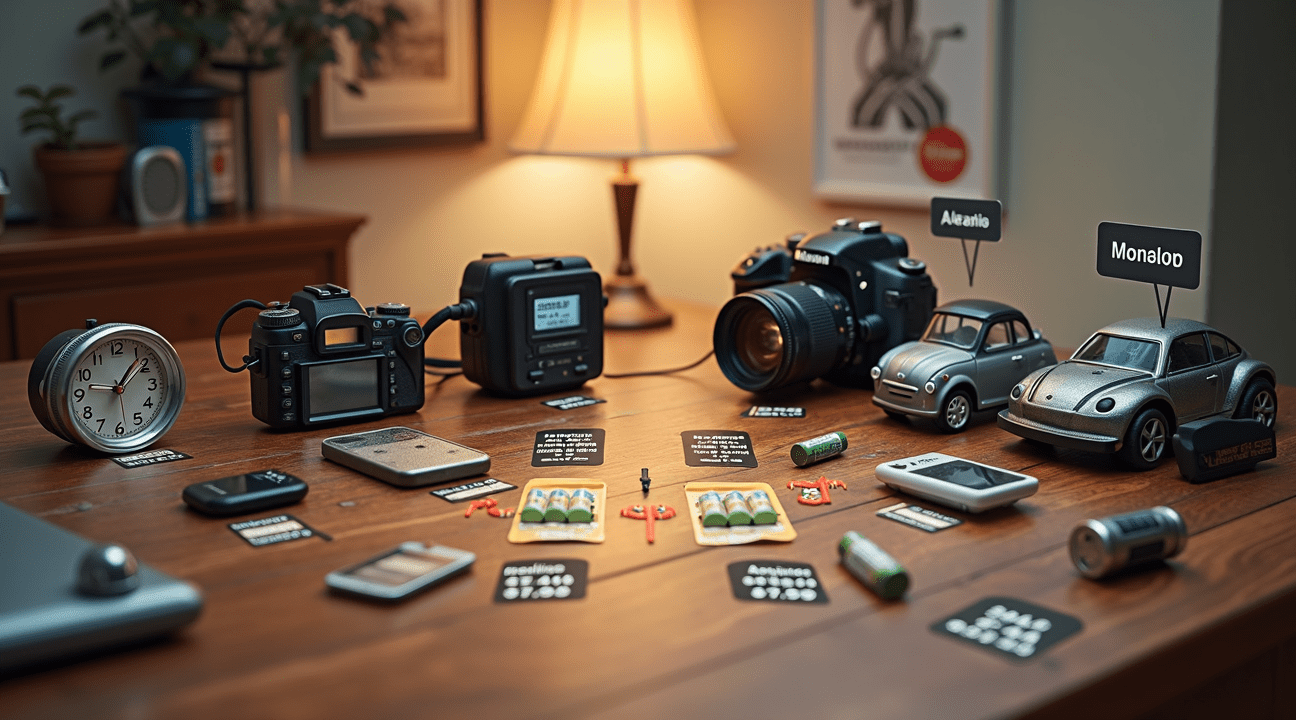
Safety Risks and Performance Issues to Watch For
Using AAA batteries in AA-powered devices creates several significant challenges that users must understand before attempting any substitution. I’ve observed that reduced run time becomes the most immediate concern due to AAA batteries’ lower capacity, typically delivering 30-50% less usage time compared to their AA counterparts in most devices.
Common Performance Problems
Several performance issues typically emerge when substituting AAA batteries for AA cells:
- Possible underpowering in high-drain devices may cause equipment to malfunction or shut off sooner than expected
- Motors or lights may appear dimmer or operate slower than normal operation
- Electronic devices might experience erratic behavior or fail to reach full functionality
- Battery life indicators may provide inaccurate readings due to voltage differences
Risk of overheating presents a serious safety concern, particularly when using improvised adapters like aluminum foil to bridge size gaps. These makeshift solutions often create poor electrical connections, leading to short circuits or dangerous overheating conditions. I recommend monitoring any device closely when using this battery substitution method.
Heat generation becomes especially problematic because AAA batteries weren’t designed to handle the power demands that AA devices typically require. The increased electrical resistance from poor connections can cause batteries to work harder than intended, generating excess heat that damages both the batteries and the device itself.
Device monitoring remains crucial for safe operation. Users should immediately discontinue use if they notice any unusual heat buildup, battery swelling, or signs of leaking. Space exploration technology demonstrates the importance of reliable power sources, and consumer devices deserve similar attention to safety standards.
High-power devices present the greatest risks when using AAA substitutions. Equipment like digital cameras, gaming controllers, or motorized tools should never rely on AAA batteries when designed for AA cells. These devices require consistent, high power delivery that AAA batteries simply can’t provide safely or effectively.
I always advise against using AAA batteries in devices requiring consistent, high power output. The combination of reduced capacity, potential overheating, and unreliable performance makes this substitution unsuitable for critical applications. While emergency situations might justify temporary use, proper AA batteries should replace any AAA substitutions as quickly as possible for optimal safety and performance.
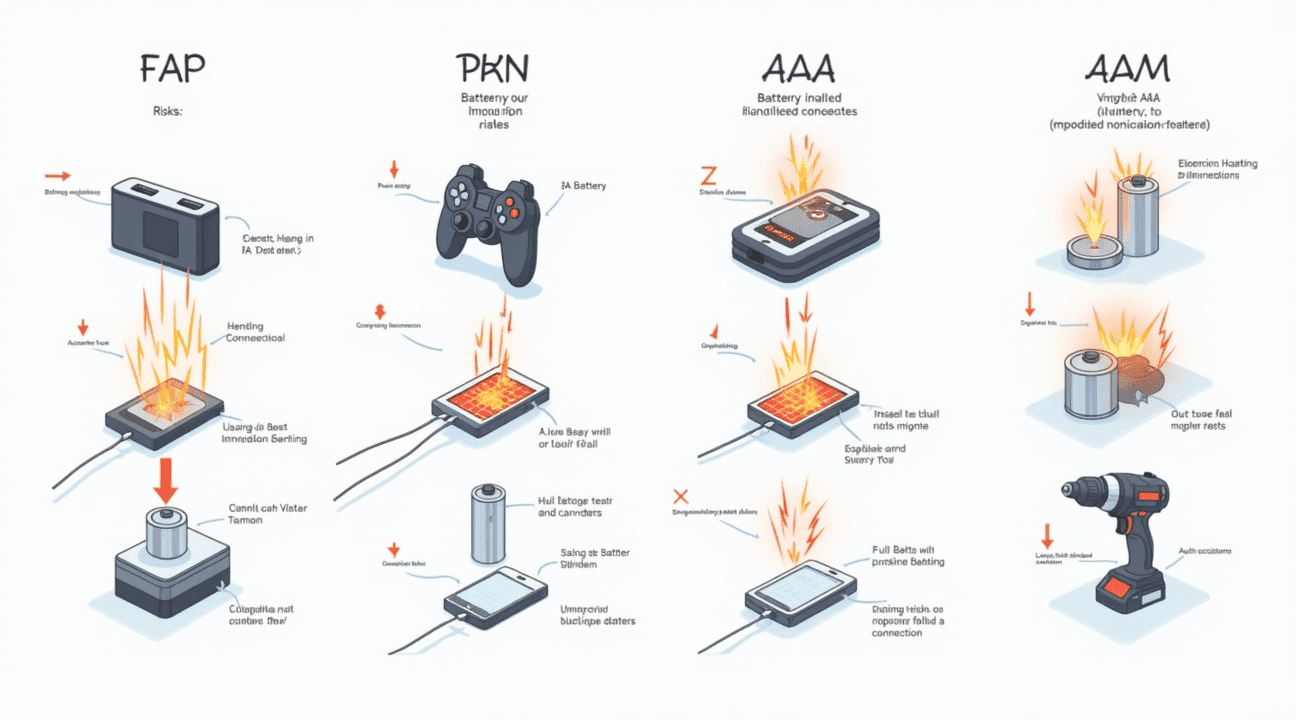
Commercial Adapter Options and Environmental Impact
I recommend three standout commercial adapters that make AAA-to-AA conversions simple and reliable. The PowerPak AAA to AA Battery Converter offers excellent build quality and consistent electrical contact. Eneloop AA Size Spacer provides a dependable solution that maintains proper voltage delivery. GP Batteries AA Adapter rounds out the top choices with its sturdy construction and affordability.
Sustainable Battery Practices
Both AA and AAA batteries come in rechargeable NiMH versions that dramatically reduce environmental waste. I encourage users to invest in these rechargeable options whenever possible, as they can be cycled hundreds of times before replacement. This approach cuts down on the constant disposal of single-use batteries while saving money over time.
However, improper substitutions create their own environmental concerns. When adapters fail or create poor connections, devices may draw more power than necessary, leading to accelerated battery drain. I’ve observed that poorly monitored conversions can also cause device wear, potentially shortening the lifespan of expensive electronics. This creates a different kind of waste problem that extends beyond just batteries.
Regular monitoring becomes essential when using any conversion setup. I check adapter connections frequently to ensure they remain secure and clean. Loose connections not only waste battery power but can also cause voltage fluctuations that damage sensitive circuitry. The key lies in recognizing when a conversion isn’t working optimally and switching back to proper AA batteries before problems develop.
Proper recycling channels should handle all used batteries, regardless of type or adapter use. I always separate spent batteries from household waste and take them to designated collection points. Many electronics retailers and municipal facilities accept both rechargeable and single-use batteries for responsible processing.
The environmental calculation becomes clearer when considering long-term usage patterns:
- If someone frequently needs AA batteries for high-drain devices, investing in proper AA rechargeables makes more sense than constantly converting AAA batteries.
- Conversely, occasional use scenarios where AAA batteries are readily available can benefit from quality adapters without significant environmental impact.
I find that technological advances in battery chemistry continue improving both performance and environmental profiles. Modern NiMH batteries hold charge longer and cycle more reliably than older generations. This evolution makes the choice between conversion adapters and proper battery types increasingly important for both device performance and ecological responsibility.
Smart purchasing decisions ultimately drive the best outcomes. Rather than accumulating multiple adapter types, I focus on identifying which devices truly need AA power and which can function adequately with converted AAA batteries through reliable adapters.
Sources:
Holobattery, “Differences Between AA and AAA Batteries”
Batteries Store, “Difference Between AA vs AAA Batteries”
UfineBattery, “Understanding the Difference Between AA and AAA Batteries”
Allelco, “AA vs AAA Batteries: Which Is Better for Your Needs?”
Battery Specialists, “4 Differences Between an Alkaline Battery AAA and a Lithium Battery AAA”
Batteries Inc, “Comparison of AA, AAA, C, and D Batteries”
Wikipedia, “AAA battery”

